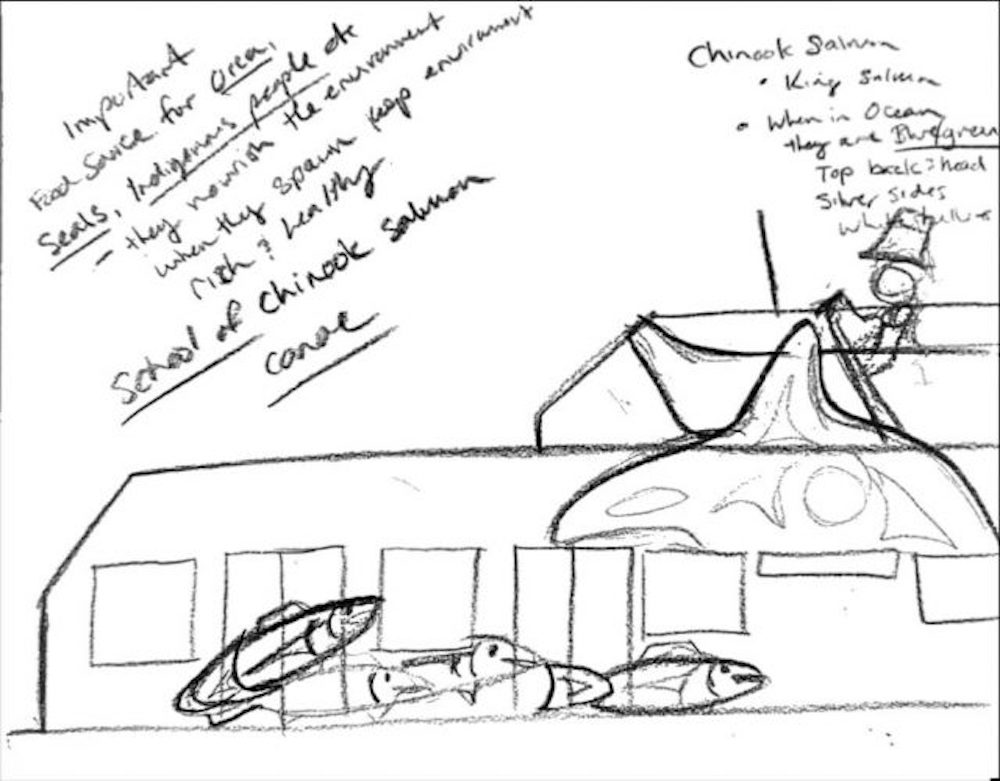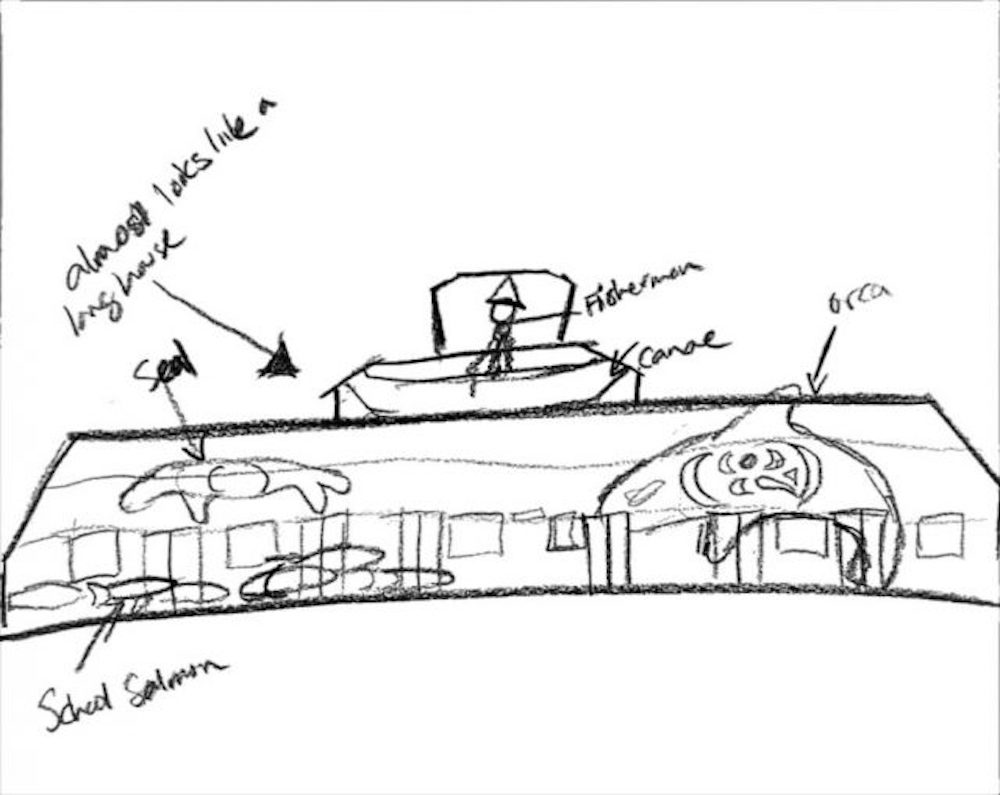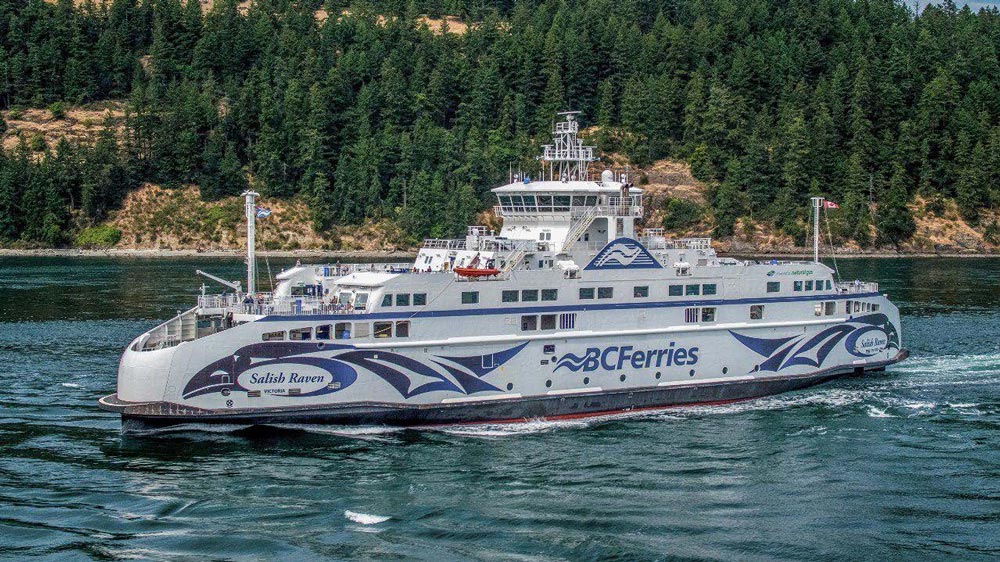New SeaBus to receive First Nations art for its exterior

Indigenous public art will blanket the exterior of the new additional SeaBus ferry vessel set to begin regular service later this summer.
Renowned artists representing three local First Nations — Kelly Cannell of the Musqueam, Siobhan Joseph of the Squamish, and Angela George of the Tsleil-Waututh — have been commissioned by TransLink to work collaboratively to produce a First Nations design for the livery of the new vessel.
- See also:
- TransLink performing sea trials of new SeaBus vessel ahead of summer launch
- New SeaBus vessel requires buoyancy modifications
- TransLink’s concept for a transformation of the SeaBus terminals (RENDERINGS)
- TransLink to study transition to electric-battery ferries for SeaBus
- BC Ferries gives new ship a First Nations name, launches art design competition
TransLink already previously made the decision to name the vessel the Burrard Chinook, which takes on the name of the largest and most iconic of the Pacific salmon species.
According to the public transit authority, the artists will use this fish species as a central motif of their art for the vessel. Additionally, the name of the vessel will be translated into Squamish and the language of the Musqueam and Tsleil-Wauth for display on the vessel.

SeaBus’ Burrard Chinoook in Vancouver after returning from modifications. (TransLink)

SeaBus’ Burrard Chinoook in Vancouver after returning from modifications. (TransLink)
Cannell says her design will feature flowing Chinook salmon traveling across the Pacific Ocean to reach their rivers spawning grounds. Both male and female salmon are included on each side of the SeaBus, with their tails “seen powering beneath the waves.”
When represented in pairs, in Coast Salish culture, salmon signify good luck, vitality, and wealth.
For Joseph’s design, her vision covers a part of the lower part of the vessel with a school of Chinook salmon, and the upper part with killer whales and sea lions. She adds that the bridge, the top section of the vessel, can be likened as a canoe that travels alongside the salmon, orcas, and sea lions — and these are all interconnected to each other as a source of food.

Concept sketches by Siobhan Joseph for the new SeaBus livery. (Siobhan Joseph)

Concept sketches by Siobhan Joseph for the new SeaBus livery. (Siobhan Joseph)
And George has conceptualized a black arrow design that swoops around the vessel to symbolize the backbone of the salmon, with a lightening design around the top of the vessel demonstrating the “vibrant power of lightening energy.”
“This design represents the double-headed serpent that dwelled in the Burrard Inlet, bringing great strength and resiliency to the people. The Chinook vessel has two engines and possesses great strength like the ancient serpent from these waters. The design also represents the ripple effect of everything we do and say echoing out into the universe. This reminds us to uphold our responsibilities to our values and laws shown to us by all living things in the universe,” described George.
“Amidst the lightening design, there are two mountains with trails that hold the knowledge and ancient wisdom of the journeys travelled by spiritual people and hunters and gatherers, seeking the sacred medicines the mountains have to offer. These mountains and the lands and waters below offer deep healing and cleansing for all living beings to replenish and grow.”
Several of BC Ferries’ newest vessels also boast First Nations livery; the 2017-built Salish Orca, Salish Eagle, and Salish Raven all have First Nations names and exterior art designs, and an upcoming fourth vessel, the Salish Heron, will carry the same kind of symbolic branding and motifs when it launches in 2022.

Salish Orca with artwork designed by Darlene Gait from Esquimalt Nation. (BC Ferries)

Salish Orca with artwork designed by Darlene Gait from Esquimalt Nation. (BC Ferries)

Salish Raven with artwork designed by Thomas Cannell from Musqueam. (BC Ferries)
The Burrard Chinook recently returned to Metro Vancouver for sea trials after receiving buoyancy modifications at a shipyard located on Vancouver Island. The vessel was originally built at a European shipyard in 2019, and the modifications were initially set for a completion date that would allow for a launch for regular service in Summer 2020, but this was delayed due to the pandemic. TransLink’s budget for the vessel is $32 million.
The use of Burrard Chinook replaces the use of an original SeaBus vessel currently used for regular service, the Burrard Beaver, which will now be used as a spare. It gives TransLink the ability to provide the eventual restart of 10-minute sailings without having to cancel sailings if there are unplanned maintenance or repairs required on one of the vessels.
TransLink used the Burrard Beaver as the temporary regular service vessel for the launch of 10-minute sailings in 2019. Each vessel can hold 385 seated passengers.
The other SeaBus vessels are the 2009-built Burrard Pacific Breeze, and 2014-built Burrard Otter II. The first two vessels built in 1976 and the Burrard Pacific Breeze were made in BC shipyards, and the latter — easily distinguished by its large windows — was constructed in Singapore. The Burrard Otter, one of the first SeaBus vessels, has been retired.
- See also:
- TransLink performing sea trials of new SeaBus vessel ahead of summer launch
- New SeaBus vessel requires buoyancy modifications
- TransLink’s concept for a transformation of the SeaBus terminals (RENDERINGS)
- TransLink to study transition to electric-battery ferries for SeaBus
- BC Ferries gives new ship a First Nations name, launches art design competition

